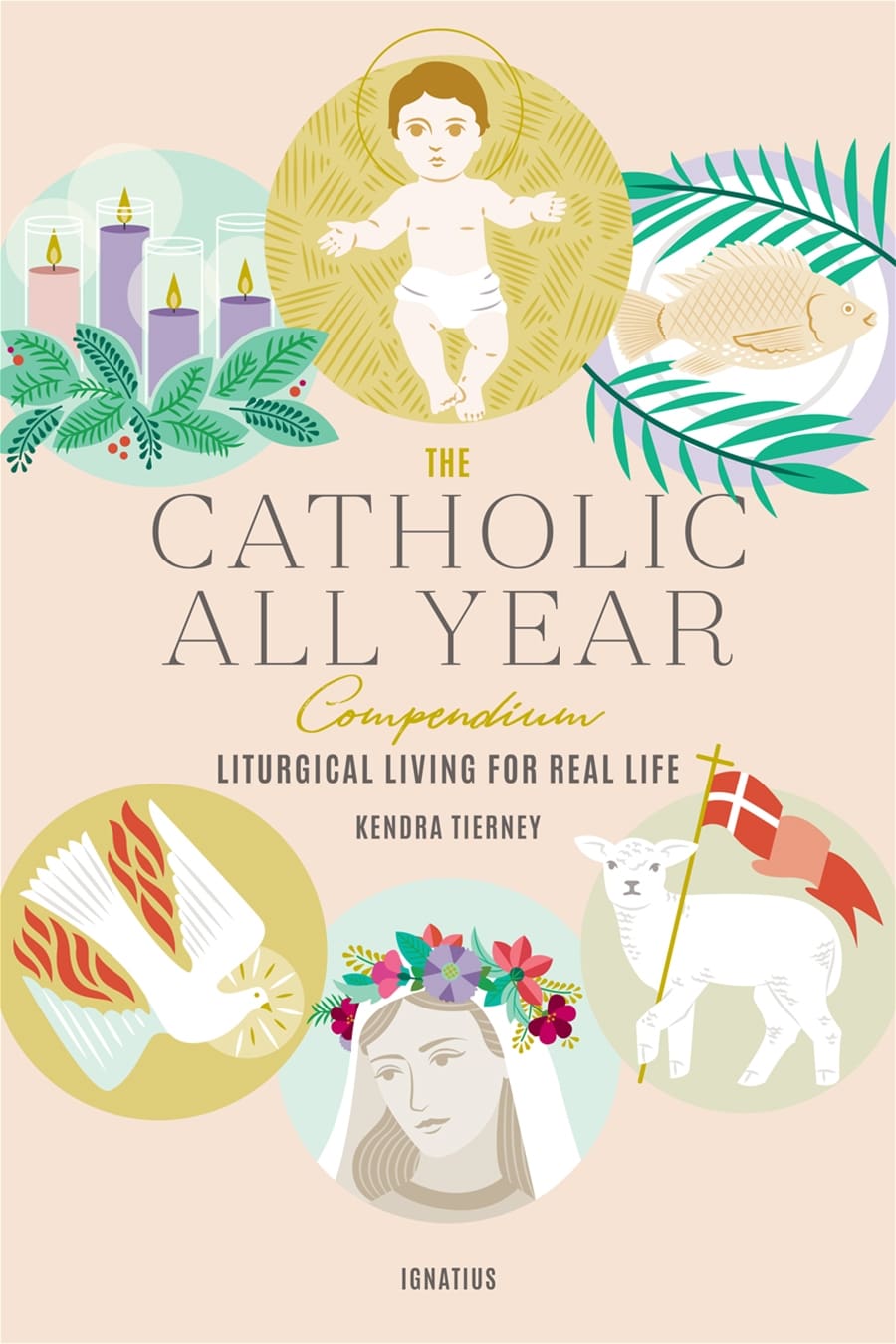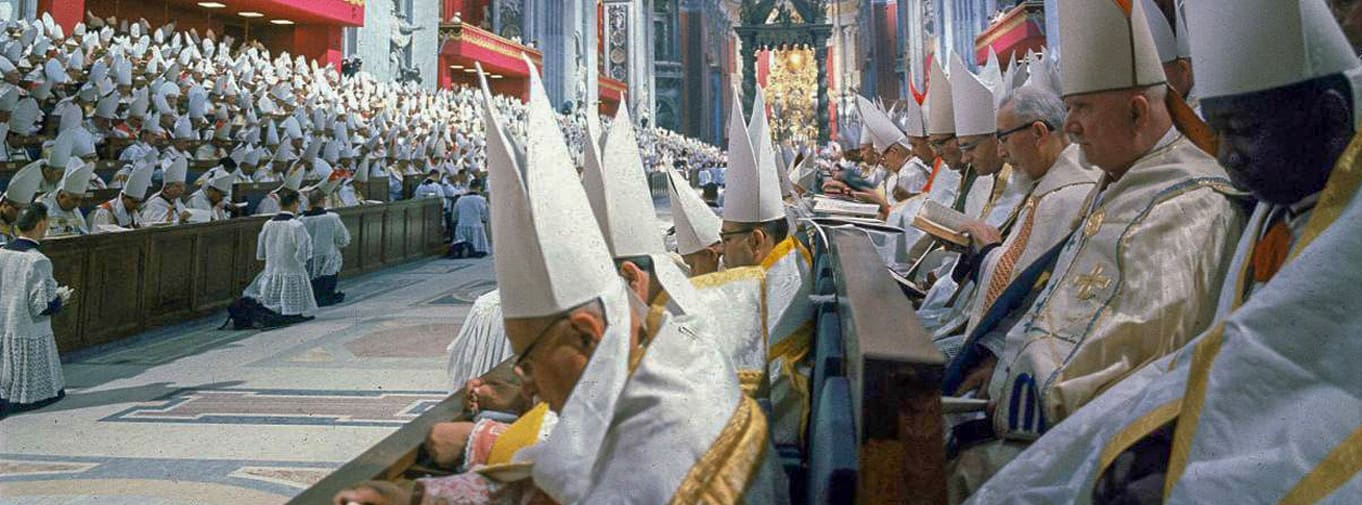 by Kendra Tierney. San Francisco: Ignatius Press, 2018. 360 pp. ISBN: 978-1-621641599. $13.60 paperback.
by Kendra Tierney. San Francisco: Ignatius Press, 2018. 360 pp. ISBN: 978-1-621641599. $13.60 paperback.
Editor’s note: The 50th Anniversary of St. Paul VI’s motu proprio, Mysterii Paschalis—February 14, 1969—passed by without notice. Yet, this letter set in place the substantial reform of the liturgical calendar. Indeed, the reform of the liturgical calendar is arguably one of the most significant of the liturgical reforms to take place after the Second Vatican Council. More than just a way of organizing time, “the celebration of the liturgical year ‘enjoys a sacramental force and a particular efficaciousness to nourish the Christian life.’” St. Paul VI wrote that the reform of the calendar had “no other purpose than to permit the faithful to communicate in a more intense way, through faith, hope and love, in ‘the whole mystery of Christ which she unfolds within the cycle of a year.’”
Yet, the hopes for the reformed calendar have not always born fruit. In her introduction to The Catholic All Year Compendium: Liturgical Living for Real Life, Kendra Tierney laments that most Catholics have only the “vaguest notion that the liturgical year even exists, let alone any idea of how to incorporate those days and that rhythm” into their lives. Tierney encourages people to begin by starting where they’re at, which for many means a renewed focus on living Sunday as the Lord’s Day, echoing St. Paul VI’s aim “to restore Sunday to its original dignity, considered by all as ‘the original feast day.’” From there, the liturgical year draws a sharper focus on baptism, celebrating baptismal anniversaries and emphasizing the centrality of the Paschal Mystery of Christ as the fundamental aspect of each person’s identity in Christ. In these and many other examples, the publication of The Catholic All Year Compendium—and the review offered here by Alexis Kutarna—is a fitting way to realizing more concretely the hope of St. Paul VI’s Mysterii Paschalis.
In the domestic Church, we extend and propel our family’s life of prayer from and towards the celebration of the liturgy, “a radiant expression of the paschal mystery, in which Christ draws us to himself and calls us to communion” (Sacramentum Caritatis, 35). What can we learn from the sacred liturgy, the rhythm and structure of the Church’s life of prayer, and how do we welcome it into our home? What does the Catholic liturgical imagination offer to us in inspiring us to pursue a deeper relationship with Christ in our family life?
Catholic writer and blogger Kendra Tierney offers a helpful compendium for the Catholic family looking for inspiration to incorporate the cycles of the Church’s liturgical year into their domestic Church. While the book consists primarily of a compilation of her blog posts in one volume, it contains a wonderful theological richness as she walks us through the liturgical seasons, devotions and prayers. In fact, rather than being a book merely about activities, crafts, and recipes for the liturgical year, Tierney provides a powerful catechetical tool and prayer guide. Written from the perspective of her own personal experiences as a wife and mother engaged in a rich Catholic family life, she includes the practices that her family finds the most beneficial, as well as her family’s trials and errors.
The advice she offers in her book is simply to try what works for your family, and offer ideas that have been tested to show that it is truly possible, as she says, “for a regular family to live a full Catholic life in the midst of today’s world with today’s demands and expectations.” This book is not a guide to being a “Pinterest-perfect” Catholic mom with Instagram-worthy liturgy crafts, but a tested guide to a real-life-messes-and-all experience of the domestic Church centered on the liturgy, celebrating our faith.
It’s Liturgy Time!
Tierney writes from the perspective of an American family whose liturgical home is in the Ordinary Form of the Roman Rite, and the book is arranged accordingly with this liturgical calendar. Outlining the seasons beginning with Advent, she weaves together the interacting temporal and sanctoral cycles. It would be possible to read the book following the liturgical year, or to pick up at any point and try something new.
Practically speaking, bolstering our liturgical living in the domestic Church will necessarily concentrate on the liturgy of the Church as the principal model for prayer. Prayers, blessings, litanies, and special intercessions are taken first from liturgical sources. These are paired with other unstructured prayers, devotions, and stories, and as the author relates, the prayers are lived out in various pious activities for the family. Some of the related ideas include foods that are traditional to a particular feast day, hymns, and conversation topics for the dinner table.
For the celebration of the Epiphany of the Lord, for example, she begins with an explanation of the feast day and the dates on which it is celebrated, and she also provides the explanation for why it is not always celebrated on January 6 (with the revision of the calendar in 1969). The feast is connected to popular imagination (such as the song “The Twelve Days of Christmas” and Shakespeare’s Twelfth Night), and several ideas are offered for consideration: a White Elephant party, Epiphany presents, the King Cake tradition (a pastry named for the three kings or wise men who visited the infant Christ), and of course the traditional Epiphany house blessing. (For the record, inspired by Tierney’s book, we made a King Cake, also known as galette des roes, and invited a dear priest friend over for dinner and a house blessing—which were only a few of the many more ideas to think about for next year!) Included in the book is a prayer text for the marking of the lintel with the blessed chalk.
Not all of the activities are centered on food, however. For February 22, the Feast of the Chair of St. Peter, she includes conversations with children about what it means to be the pope, and even instructions for writing him a letter to the Holy Father—with proper salutations and mailing address included!
During the Lenten season, Tierney covers not only common practices but ideas to incorporate prayer, fasting, and almsgiving into the home. From the traditional—and literal—“burying of the Alleluia” to Tierney’s own 66 ideas for things to give up (more than just cake), the author covers a range of ideas for keeping this season holy. Most importantly, the examples provided are practical and theologically rich and centered on liturgical concepts.
Is Your Calendar Full?
The domestic Church, in mirroring the activity of the universal Church, sees the peak of her activity in the liturgy, which includes more than Sunday Mass. Tierney explores the sacramental life, with the celebration of baptismal days, a renewal of baptismal promises on the Feast of the Baptism of the Lord, and other ideas to remind the family of the centrality of these moments in their life of faith. On the Solemnity of the Most Holy Body and Blood of Christ, nothing teaches about the Eucharist better than spending time with him. Teaching children about the Real Presence requires them to be in his presence, which can be done during the traditional practice of a Eucharistic procession on this day, by staying after Mass, or by visiting an adoration chapel together as a family on a regular basis. These simple practices reinforce the connection between the sacramental life and the family.
Tierney offers a simple six-step process for getting started, as gradually as is needed in your family: start with the liturgical living you are already doing, begin celebrating baptismal anniversaries, add name days, remember Fridays and Sundays, start observing days with well-known traditions (St. Nicholas, for example), and observe solemnities in the home.
The central portion of the book is rich in content and the appendices are as well, including a thorough explanation of days of fasting and abstinence, the practice of indulgences, the process of canonization, and a quick reference guide to the feast days covered in the book. Sources include the documents of the Church: the Catechism of the Catholic Church, General Instruction of the Roman Missal, Code of Canon Law, instructions from the USCCB, and many more such resources. Magisterial sources are supplemented by the writings of the saints, hymns, and other prayer texts.
This compendium provides a well-researched, grounded, and prayerful guide to begin family traditions in your own home, based on the liturgical calendar, connecting Sunday morning to the rest of the week. This sort of concentrated effort to live out the liturgy daily not only leads to a fuller expression of the faith in the home, but also encourages families to carry the faith into the world. As Pope St. John Paul II wrote in Familiaris Consortio, “An important purpose of the prayer of the domestic church is to serve as the natural introduction for the children to the liturgical prayer of the whole Church, both in the sense of preparing for it and of extending it into personal, family, and social life” (61). Kendra Tierney delivers a loving and delightful practical resource to Catholic families seeking inspiration for true liturgical living.


